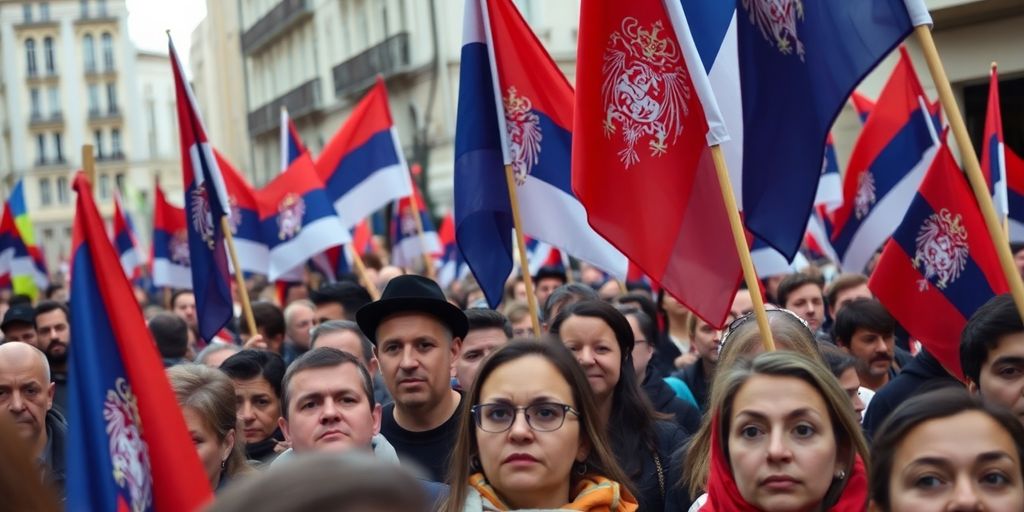In a concerning development, Serbian extremist flags and symbols have become increasingly visible at recent protests, culminating in the display of a large Kosovo annexation flag during a demonstration last night. This trend raises alarms about the potential for heightened tensions in the region, as nationalist sentiments appear to be gaining traction among certain groups.
Key Takeaways
- Serbian extremist flags and symbols are becoming more prevalent at protests.
- A large Kosovo annexation flag was prominently displayed at a recent demonstration.
- The rise in nationalist sentiments could lead to increased tensions in the region.
Background on the Protests
The protests, which have been ongoing for several months, are rooted in a complex history of ethnic tensions and territorial disputes between Serbia and Kosovo. The display of extremist symbols is often seen as a provocation, signaling a resurgence of nationalist fervor that many had hoped was fading.
The Significance of the Kosovo Annexation Flag
The Kosovo annexation flag, a symbol of Serbian claims over the territory, has been a contentious emblem in the region. Its appearance at protests is not merely a display of national pride but rather a stark reminder of the unresolved issues stemming from the Kosovo War in the late 1990s. This flag’s visibility at protests could indicate a shift in public sentiment towards more aggressive nationalist positions.
Reactions from the Public and Authorities
The public’s reaction to the increased presence of extremist symbols has been mixed. While some individuals express support for the nationalist cause, others voice concerns about the implications for peace and stability in the region. Authorities have been urged to take a firm stance against hate symbols to prevent escalation.
Potential Implications for Regional Stability
The rise of extremist symbols at protests could have significant implications for regional stability. As nationalist sentiments grow, there is a risk of increased tensions not only between ethnic groups but also between Serbia and Kosovo. This situation could complicate diplomatic efforts aimed at fostering reconciliation and peace in the Balkans.
Conclusion
The emergence of Serbian extremist flags and symbols at protests, particularly the display of the Kosovo annexation flag, highlights a troubling trend in the region. As nationalist sentiments gain momentum, the potential for conflict increases, necessitating a careful response from both the public and authorities to ensure that the hard-won peace in the Balkans is not jeopardized.






